Yearn to uncover the enigmatic figure of Chemosh, a formidable Moabite deity clashing with ancient Israel's Yahweh in biblical lore?
Chemosh in the Bible
In the Bible, you'll encounter Chemosh as the principal deity of the Moabites, often depicted as a formidable god of war and sovereignty. References point to him as analogous to other regional deities like Milcom of the Ammonites and Qos of the Edomites. He's portrayed mainly as a rival to the Israelite god, Yahweh, symbolizing the theological and moral conflicts intrinsic to the ancient narratives. Chemosh's worship, criticized for its associations with human sacrifices, particularly of children, marks him as a figure of opposition in biblical texts on moral and religious grounds. Exploring the depths of this rivalry reveals layers of ancient ideological conflicts.
Key Takeaways
- Chemosh is depicted as the national deity of the Moabites, often in conflict with the Israelite god Yahweh.
- In the Bible, Chemosh is associated with abhorrent practices like human sacrifices, particularly of children.
- Biblical narratives often portray Chemosh as a rival to Yahweh, emphasizing theological and cultural conflicts.
- Scriptures criticize and demonize Chemosh, reflecting ideological disputes between the Moabites and Israelites.
- The worship of Chemosh is condemned in biblical texts, contributing to its decline and negative portrayal.
Origin and Identity of Chemosh
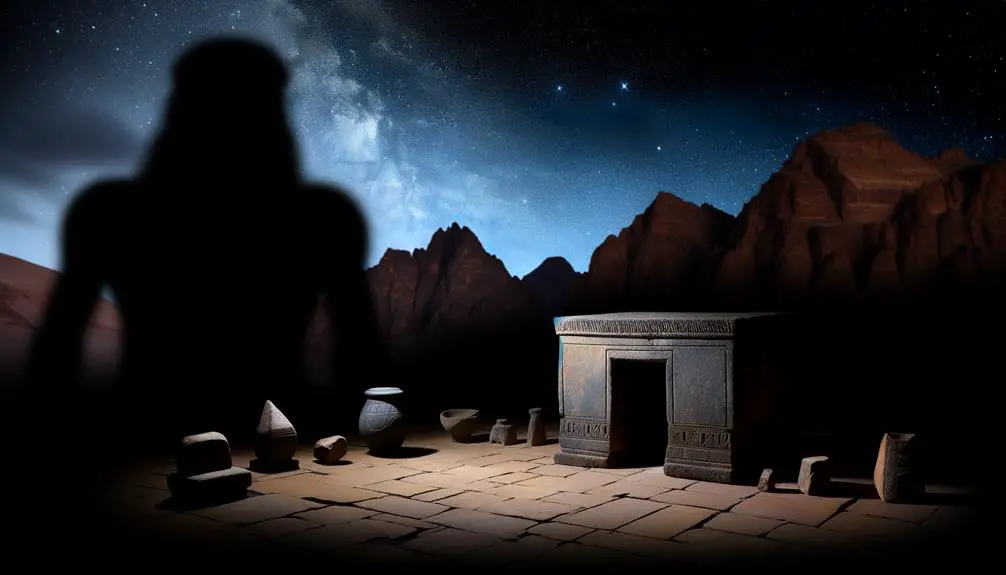
Chemosh, known primarily as the national deity of the Moabites, emerges in ancient texts as a god of war and a guardian of sovereignty. You'll find that exploring Chemosh's etymology and comparative mythology offers fascinating insights into his role and perception in ancient times. The name 'Chemosh' is thought to derive from the Semitic root *ḫmš, which suggests a connection to 'subduer' or 'conqueror', reflecting his military aspect.
In comparative mythology, Chemosh is often likened to deities from neighboring cultures, which can illuminate his characteristics and importance. For instance, similarities are drawn between Chemosh and the Ammonite god Milcom, as well as the Edomite deity Qos, both of whom also possess warlike attributes and sovereignties. This comparison isn't merely superficial; it underscores a broader, regional archetype of divine figures who play roles in warfare and governance.
Analyzing these connections, you can perceive how Chemosh's identity was shaped not only by Moabite religious practices but also by the geopolitical and cultural exchanges of the region. This interplay of influences highlights the dynamic nature of ancient Near Eastern religions, where deities often absorbed and reflected the traits of their counterparts in neighboring cultures.
Chemosh in Moabite Culture
In Moabite culture, you'll find that the reverence for Chemosh transcended mere worship, embodying the nation's identity and political aspirations. This deity wasn't just a figure of religious significance; Chemosh was a symbol of national unity and strength, deeply integrated into the very fabric of Moabite society. Analysis of Moabite artifacts, particularly inscriptions and religious symbols, reveals a society where state and religion were profoundly entwined, with Chemosh at the helm as both protector and guide.
The iconography found on these artifacts often depicts Chemosh in a commanding pose, usually armed and sometimes accompanied by subjugated enemies, indicating his role as a warrior deity. This imagery not only reinforced his supreme status within the pantheon but also served as a constant reminder of the divine support for Moabite sovereignty. Religious symbols associated with Chemosh, such as the crescent moon and the lance, which appear frequently on pottery and in architectural elements, further highlight his martial and celestial attributes, underscoring his dual role in both spiritual and temporal domains.
Through these detailed examinations, it's clear that Chemosh was not only worshipped but was central to defining the Moabite way of life, intertwining religious devotion with political ideology.
Biblical References to Chemosh
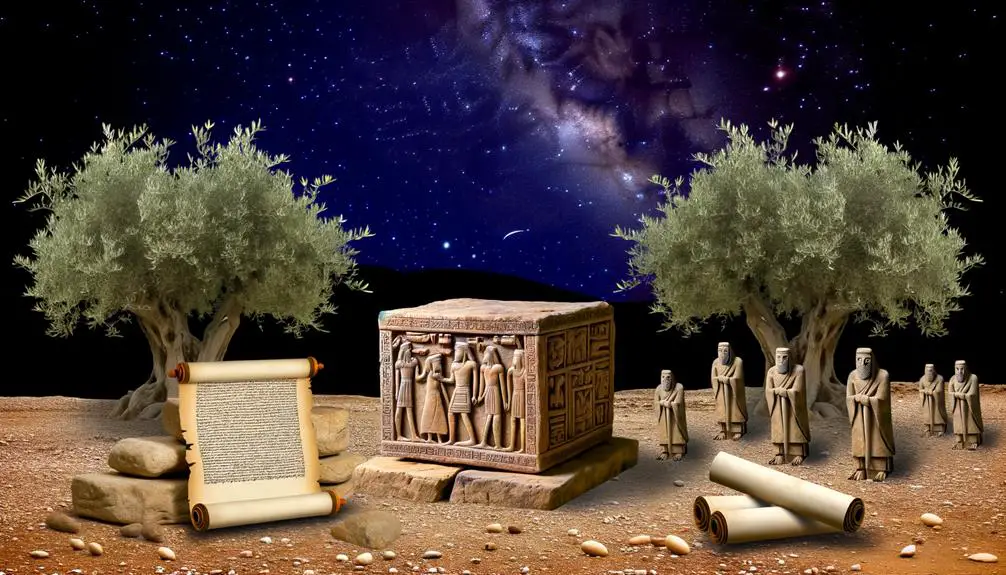
While Moabite artifacts vividly illustrate Chemosh's integral role in their society, the Bible offers a distinct perspective, portraying him primarily as the god whom the Moabites worshiped in opposition to the Israelite deity, Yahweh. Your understanding deepens when you explore biblical references that highlight this antagonistic depiction. For instance, in the Book of Kings and Chronicles, you'll find that Chemosh's worship by the Moabites is intricately linked with sacrificial practices, which are often presented in a condemnatory tone by the biblical authors.
Chemosh depictions in the Bible are sparse but telling. He's depicted not only as a rival to Yahweh but also as a deity whose worship involves reprehensible rites, including human sacrifices, particularly of children. This portrayal aligns with the broader biblical narrative that consistently opposes Canaanite religious practices, which were seen as morally and theologically corrupt by the Israelite writers. The emphasis on such sacrificial practices serves to underscore the theological and ethical divide between the Israelites and the Moabites.
Your grasp of these elements is important for understanding the complex interplay of religion, politics, and identity in ancient texts. This analysis reveals how the biblical portrayal of Chemosh was shaped by ideological and theological conflicts, using the god as a symbol of moral and religious alterity.
Chemosh's Followers and Rituals
Delving into the rituals and followers of Chemosh, you'll discover that they engaged in complex ceremonies which were deeply intertwined with the sociopolitical fabric of Moabite society. These rituals not only served religious purposes but also reinforced the social hierarchy and communal bonds within Moab. The followers of Chemosh, mainly Moabites, were known to gather at specific ceremonial locations, which often held significant geopolitical or natural importance, enhancing the sacredness and authority of the rituals performed.
The ritual artifacts associated with Chemosh are particularly telling of the Moabites' religious practices and artistic craftsmanship. These included ceremonial altars, inscribed stelae, and possibly even human figurines, which might have played a role in supplication or offering practices. Analysis of these artifacts shows skilled artisanship and detailed iconography, which suggest a high level of ritual sophistication and a rich religious symbolism.
The rituals themselves likely varied, involving offerings, prayers, and possibly even divination practices. These ceremonies would have been crucial in seeking the deity's favor for matters ranging from fertility and prosperity to victory in warfare. Each ritual act and artifact held specific meanings and functions, carefully woven into the fabric of Moabite cultural and religious life.
Conflicts Between Chemosh and Yahweh
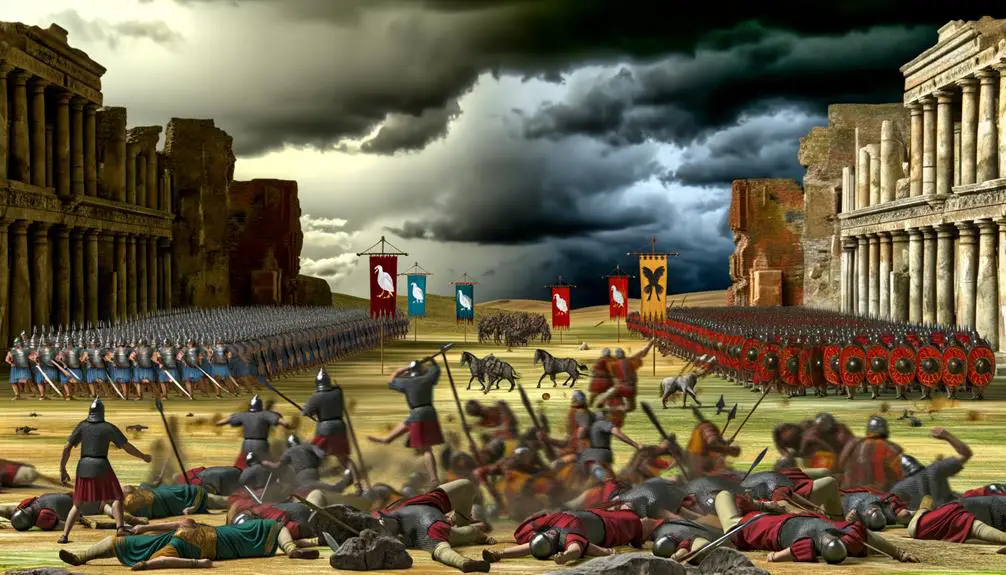
The conflicts between Chemosh and Yahweh, as depicted in biblical texts, reflect deep theological and cultural rifts between the Moabites and the Israelites. This divine rivalry isn't just about two distinct deities clashing; it's emblematic of broader theological disputes that shaped the narratives and conflicts of the ancient Near East. You'll find that the Bible often portrays these conflicts not merely as skirmishes over land or power but as battles for spiritual supremacy.
Delving deeper, the rivalry between Chemosh and Yahweh in the Bible serves as a mirror to the intense inter-community antagonisms. Each deity's demand for exclusive worship underscores the zero-sum nature of ancient Near Eastern religion, where the ascension of one god in a community's pantheon necessitated the denigration of another. This exclusivity fueled continuous friction, as the acknowledgment of a rival's power could be seen as conceding one's own deity's inferiority.
Moreover, the narratives often emphasize Yahweh's supremacy over Chemosh, which aligns with the broader biblical theme of demonstrating Yahweh's superiority over all other gods. This not only solidified group identity among the Israelites but also justified their actions against Moabite territories, framing them as divinely ordained. These accounts, hence, were as much theological justifications as they were historical or political records.
Impact of Chemosh Worship on Israel
Chemosh worship greatly influenced Israel's religious and social dynamics, often intensifying existing animosities and shaping intercultural interactions. The introduction and practice of Chemosh worship among the Israelites not only altered their religious landscape but also led to significant shifts in their societal structure and diplomatic relations. As you explore further into the historical context, it's clear that the worship of this Moabite god was not just a matter of spiritual allegiance but also a powerful catalyst for broader cultural and political repercussions.
Here are key impacts of Chemosh worship on Israel:
- Cultural Integration: Worship practices blended, leading to both syncretism and resistance among different communities. This integration sometimes facilitated mutual understanding and adaptation, but also sparked internal disputes over religious purity and identity.
- Political Alliances: Alignments with Moabite factions were occasionally reinforced through shared worship, affecting Israel's internal and external political strategies.
- Diplomatic Tensions: The adoption of Chemosh provoked tensions with neighboring tribes and kingdoms, complicating Israel's foreign policy and diplomatic engagements.
- Social Strife: Conflicts escalated within communities, particularly between those adhering strictly to Yahwistic traditions and others inclined towards syncretic practices involving Chemosh.
This intricate interplay between worship, politics, and community dynamics underscores the profound influence of Chemosh on Israel's historical trajectory.
The Demise of Chemosh Worship
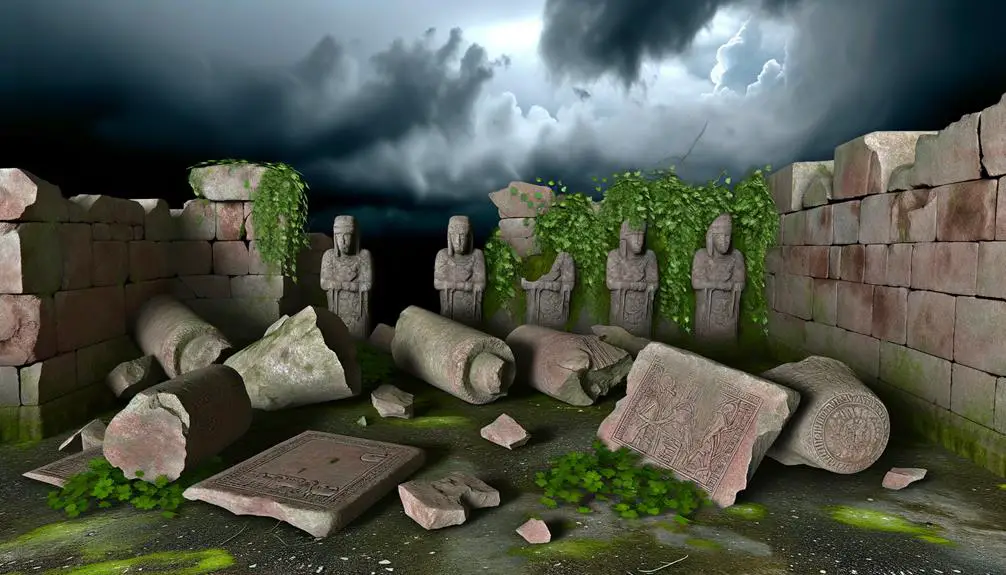
As you explore the decline of Chemosh worship, you'll find that the diminishing influence of Moabite practices played a pivotal role. Biblical condemnations, particularly from prophets who viewed the deity as an abomination, greatly accelerated this process. These scriptural repudiations not only reflected but also influenced the shifting religious landscape of the region.
Decline of Moabite Practices
Worship practices dedicated to Chemosh gradually fell out of favor as Moabite influence waned due to external pressures and internal shifts. You can track these changes through various sources, which highlight the complex interplay between cultural and political dynamics.
- *Archaeological findings*: Excavations reveal fewer artifacts from later periods associated with Chemosh, suggesting a decline in his worship.
- *Cultural evolutions*: As Moabites interacted more with neighboring cultures, their religious practices evolved, incorporating elements from other traditions.
- *Political instability*: Frequent conflicts weakened Moab's social structure, impacting religious adherence.
- *Economic changes*: Shifts in trade routes reduced Moab's wealth, decreasing funds available for temple maintenance and rituals.
These factors combined to diminish Chemosh's role in the region, reflecting a broader trend of cultural transformation within Moab.
Biblical Condemnations Impact
While the aforementioned sociopolitical and economic shifts played significant roles in diminishing Chemosh's prominence, the explicit denunciations found within biblical texts further accelerated the decline of his worship in Moabite society. These scriptures not only criticized but also demonized Chemosh, framing his veneration as profoundly antagonistic to the monotheistic ethos of emerging Israelite identity. This narrative starkly impacted how Moabites were perceived, conflating their religious practices with moral bankruptcy and societal decay. The ethical implications were profound, urging a monotheistic uniformity that left little room for religious tolerance. As a result, you see a marked decrease in Chemosh's followers, driven not just by external pressures but also by internal rejections of his worship, influenced by these powerful condemnations.
Frequently Asked Questions
How Does Chemosh Compare to Similar Deities in Nearby Regions?
When examining deity similarities, you'll find Chemosh shares traits with regional gods, reflecting deep cultural connections across neighboring civilizations. Such analysis highlights the complex interplay of religious influences in ancient times.
Are There Any Modern-Day Followers of Chemosh?
You'll find no significant evidence of a religious revival or cultural resurgence among modern-day followers of Chemosh. Scholarship indicates that worship of this deity has not continued into contemporary religious practices.
How Has Chemosh Influenced Contemporary Literature or Media?
You might find it intriguing that 90% of ancient deities have influenced modern narratives. Chemosh's impact on contemporary literature includes subtle literary motifs and rare media adaptations, reflecting his ancient cultural significance.
What Archaeological Evidence Supports the Existence of Chemosh?
You'll find that archaeological evidence of Chemosh includes worship sites and ritual artifacts analysis, revealing detailed practices and societal roles centered around this figure, enhancing our understanding of ancient cultural and religious dynamics.
Has Chemosh Been Depicted in Ancient Art or Inscriptions?
You're exploring ancient narratives through art, where Chemosh iconography emerges vividly. Inscription analysis reveals that depictions and texts indeed portray this deity, illustrating his cultural significance in historical contexts.

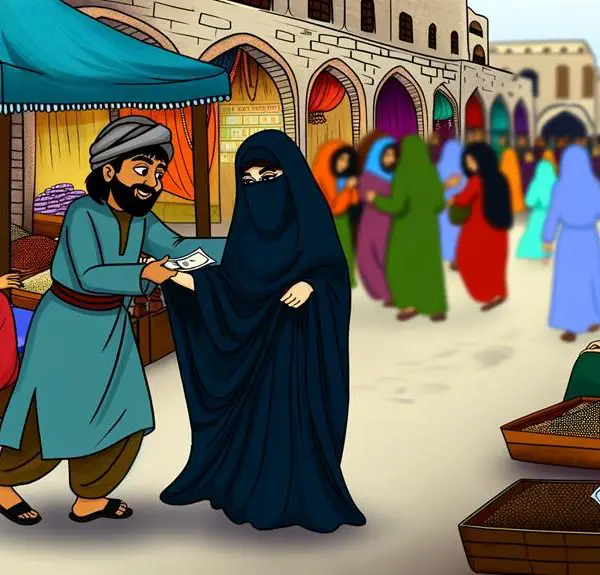
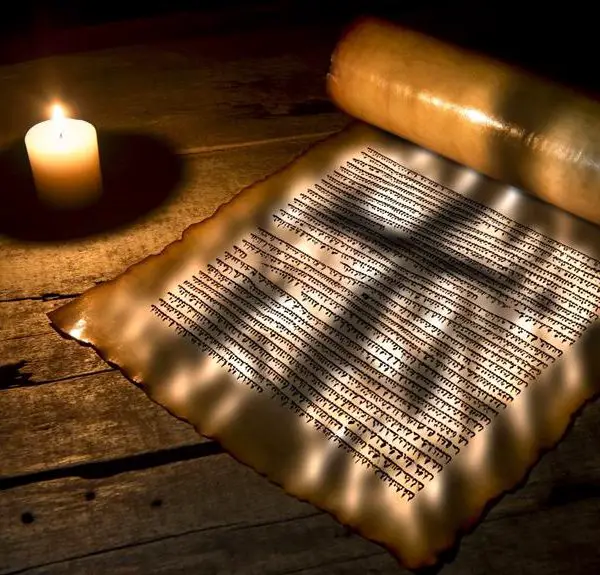
Sign up